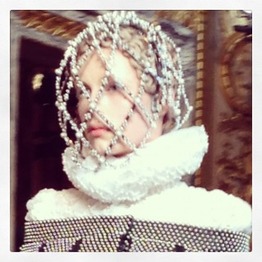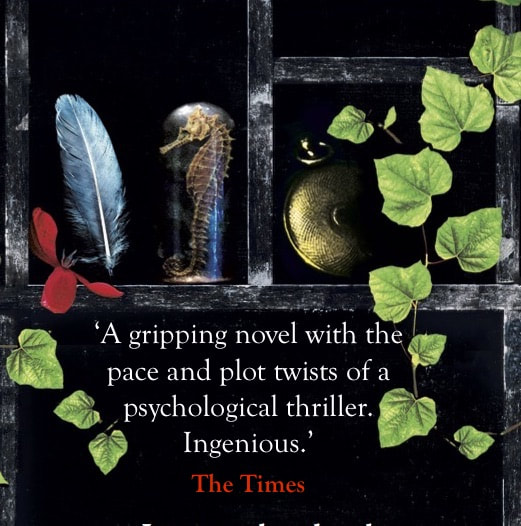|
I was lucky enough to hear Hilary Mantel in conversation with Bodleian librarian Dr Sarah Thomas at the Oxford Literary Festival yesterday. She spoke, to a captive audience, with a calm and quiet authority, and a knowing wit, making delicate hand gestures as if discretely conducting an invisible orchestra.
Mantel began by reading a short passage from BRING UP THE BODIES, a seemingly insignificant moment, in which the Seymour women are fussing over daughter Jane's headgear. But this small event reveals itself as one that tells much of the imminent change of regime, of how one queen is to be toppled to make way for another. The old-fashioned awkward and heavy gable hood that is being shoved onto the uncomplaining Jane's head, its wires digging in uncomfortably, symbolises the way that the garb of queenship tells its own stories about allegiances. This is not the French hood made popular by Anne Boleyn, it is in the old style, harking back to the beloved Catherine Aragon – a visual signifier of an unthreatening conservatism. This is a family on the brink of power, carefully orchestrating each and every move. But then the apparently meek and silent Jane speaks, revealing with unexpected ruthlessness that she doesn't believe the decision to put Anne Boleyn in a nunnery is sufficient. What she is saying, without exactly saying it, is that Anne must die. Such a thing coming from the mouth of an apparently meek and passive girl is a powerful moment in the text, allowing us to see that this girl has grasped a sense of her own power in this moment. This passage, for me, demonstrates perfectly the way Mantel's writing creeps up on the reader, allowing a slow realisation of the horror that inhabits the world of the novel. Mantel then went on to tell of her fascination with Cromwell and her long held desire to write a book about him, she revealed that as each year passed she remained astonished that no one else had taken the opportunity to fictionalise such a man. I imagine that the whole audience was thinking, as I was, thank god for that. When she eventually embarked on her Cromwell project, WOLF HALL, it was conceived as a single book, but as Mantel began to write and plot the story, she told us, it became clear to her that the death of Thomas More was not simply an event in Cromwell's story, but the culmination of one part of the story, and that there would have to be another book – and then another. She talked of how each part of the story leads into and overlaps with the other parts, reading the passage that starts WOLF HALL, in which we are behind Cromwell's eyes as he is on the ground being kicked by his father. She revealed that the final novel will end with a return to this beginning: Cromwell on the ground in a pool of his own blood remembering his father's boot. When Mantel talked of her writing process, of how her metaphors run through her work, how 'books are living things buzzing with dialogue between writer and reader,' of the way in which texts from the past reveal slivers of the people that inhabit her novels, she talked with such eloquence and authority, allowing us to see the complete control she has over her complex material. It was a fascinating glimpse into the imagination of a truly great writer at the top of her game. Finally Dr Sarah Thomas awarded the Bodley medal to the author, whose first words were, 'nothing could mean more to me.' This seemed said with utmost sincerity as Mantel went on to talk of the importance of libraries in her life and work, remembering the small village library of her youth with its poor selection of children's books. She couldn't wait to grow up, she said, to gain access to the adult section of the library and she couldn't have imagined the existence, then, of such a place as the Bodleian.
0 Comments
 At McQueen A/W13 – Pic Lucy-Yeomans With Alexander McQueen showing ruffs for next winter it would seem that all things Tudor continue to fascinate us. The ruff began as a small ruffle at the collar of the men's linen undergarment that was visible above the doublet in the mid sixteenth century. By the late 1560s they were getting bigger and were all the rage for women too. The ruff continued to expand for some decades and all sorts of styles developed, tiered, cartwheel, lace, bejewelled, to mention just a few, and indicated the wealth of the wearer – the whiter and larger your ruff the more you had to spend on the hours of starching and careful shaping required to keep it looking pristine. For an in-depth exploration of ruff matters see Dr Victoria Buckley's excellent Shakespeare's England blog. |
Subscribe to Elizabeth's quarterly newsletter below:Archives
June 2018
Categories
All
|













 RSS Feed
RSS Feed
